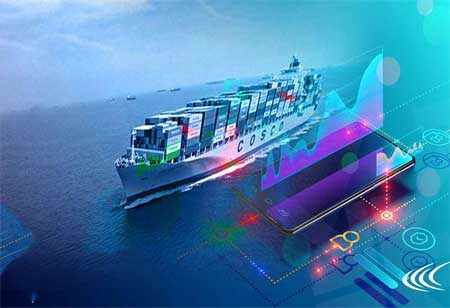THANK YOU FOR SUBSCRIBING
THANK YOU FOR SUBSCRIBING

By
Logistics Transportation Review | Monday, December 16, 2024
Stay ahead of the industry with exclusive feature stories on the top companies, expert insights and the latest news delivered straight to your inbox. Subscribe today.
Choosing the right third-party logistics (3PL) provider is crucial for business success. Asset-based 3PLs offer stability and control with owned assets, while non-asset-based 3PLs provide flexibility and cost savings through partnerships. Hybrid models combine both, ensuring reliability and adaptability to meet diverse logistics needs effectively.
Fremont, CA: Choosing the best third-party logistics (3PL) provider is crucial for business ventures that want to improve the delivery experience while maintaining customer’s trust. ShipStation reports that 83% of the customers may not return to a retailer following a terrible delivery experience. This can, therefore, mean that selecting a 3PL provider can greatly determine how your business goes. A guide on differences between asset-based and non-asset-based 3PL providers is necessary to consider the pros and cons of your selection process.
Asset-Based 3PL
Asset-based 3PLs own their assets to manage shipping operations, including transportation, warehouse storage and distribution trucks. They deliver a total solution by handling the complete supply chain using their equipment. Some of the top advantages of an asset-based 3PL are that they will not disappear overnight and thus can offer continuity to your supply chain. They own physical assets, so they do not rely on third-party providers for anything, giving them more control over the supply chain.
But there are some downsides:
● Fixed Rates: Since they use their resources, there is less room for cost negotiation.
● Less Flexibility: Their investment in resources can limit their ability to adapt quickly to changing needs.
What Is a Non-Asset-Based 3PL?
Non-asset-based 3PLs do not own the assets needed to conduct logistics operations. Rather, they negotiate deals with warehouses and trucking companies to manage their clients' supply chains. The strengths of non-asset-based 3PLs are as follows:
● Personalization: They design and execute supply chains tailored to specific needs.
● Flexibility: They can find the best carriers, warehouses and distribution channels within your budget, often implementing cost-saving solutions.
The disadvantages of these providers include instability and increased risk. They shut down abruptly, leaving no client support and no solid infrastructure. There is a high risk that when things go wrong, it may lead to the worst supply chain management through outsourcing responsibilities to other companies.
Hybrid Models: The Best of Both Worlds
Other companies, such as ExpressIt, use a hybrid model that incorporates the characteristics of both asset-based and non-asset-based 3PLs. They retain the infrastructure but outsource services in certain areas to improve flexibility and lower costs. Hybrid models have:
Versatility: They can use their assets to address regular requirements and negotiate with other service providers to accommodate order spikes.
Quality Assurance: They ensure high service standards through cooperation with dependable transportation and warehouse owners.
How to Choose the Best Logistics Partner
The process of selecting a 3PL provider is choosing the right service provider based on your business needs. Asset-based providers, non-asset-based providers and hybrid models are unique and can offer balanced solutions. Here are some tips on how to choose the best logistics partner:
Evaluate Your Needs: Decide if you prefer stability as seen in an asset-based provider or the adaptability of a non-asset-based provider.
Check Credentials: Review and assess the strengths, weaknesses and client testimonials about the provider.
Consider Costs: Compare different providers' cost structures and choose one that suits your budget.
Assess Flexibility: Ensure that the provider will easily adapt to changes in your needs and any unexpected spikes in demand.
Choosing the appropriate 3PL service provider will determine the success of delivering customer experiences. Once one knows the difference between the asset-based, non-asset-based and hybrid models, it can provide the best option based on the business objectives pursued.
I agree We use cookies on this website to enhance your user experience. By clicking any link on this page you are giving your consent for us to set cookies. More info





